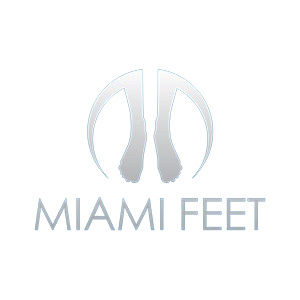Got Questions? We've Got Answers!
For years, Miami Feet has provided patients with the foremost podiatric care service in South Florida.1. What types of foot and ankle problems does Miami Feet treat?
At Miami Feet, we treat a wide range of podiatric issues, including but not limited to: ankle sprains, fractures, bunions, plantar fasciitis, heel spurs, ingrown toenails, diabetic foot care, and tendon and ligament problems.
2. What is the consultation and treatment process at Miami Feet?
The process begins with an initial consultation, during which we will conduct a comprehensive examination and discuss your symptoms and medical history. Based on this assessment, we will develop a personalized treatment plan that may include conservative therapies, medical interventions, or surgery, as needed.
3. How can I know if I need medical treatment for my foot or ankle pain?
If you are experiencing persistent pain, swelling, difficulty walking, or performing daily activities, it is important to seek medical attention. Our team at Miami Feet can evaluate your symptoms and provide the appropriate treatment to alleviate your discomfort and improve your quality of life.
4. What is the experience of the Miami Feet team in treating podiatric conditions?
Our team at Miami Feet consists of highly qualified and experienced podiatrists who specialize in treating a wide variety of podiatric conditions. We are committed to providing the highest quality care and staying current with the latest techniques and advancements in the field of podiatry.
5. What sets Miami Feet apart from other podiatric clinics in South Florida?
At Miami Feet, we strive to provide personalized, compassionate care to each patient. Our focus is on your individual needs, and we work closely with you to develop a treatment plan that aligns with your goals and lifestyle. Additionally, our commitment to excellence and innovation distinguishes us as leaders in the field of podiatry in South Florida.
1. What types of foot and ankle problems does Miami Feet treat?
At Miami Feet, we treat a wide range of podiatric issues, including but not limited to: ankle sprains, fractures, bunions, plantar fasciitis, heel spurs, ingrown toenails, diabetic foot care, and tendon and ligament problems.
2. What is the consultation and treatment process at Miami Feet?
The process begins with an initial consultation, during which we will conduct a comprehensive examination and discuss your symptoms and medical history. Based on this assessment, we will develop a personalized treatment plan that may include conservative therapies, medical interventions, or surgery, as needed.
3. How can I know if I need medical treatment for my foot or ankle pain?
If you are experiencing persistent pain, swelling, difficulty walking, or performing daily activities, it is important to seek medical attention. Our team at Miami Feet can evaluate your symptoms and provide the appropriate treatment to alleviate your discomfort and improve your quality of life.
4. What is the experience of the Miami Feet team in treating podiatric conditions?
Our team at Miami Feet consists of highly qualified and experienced podiatrists who specialize in treating a wide variety of podiatric conditions. We are committed to providing the highest quality care and staying current with the latest techniques and advancements in the field of podiatry.
5. What sets Miami Feet apart from other podiatric clinics in South Florida?
At Miami Feet, we strive to provide personalized, compassionate care to each patient. Our focus is on your individual needs, and we work closely with you to develop a treatment plan that aligns with your goals and lifestyle. Additionally, our commitment to excellence and innovation distinguishes us as leaders in the field of podiatry in South Florida.

Qualified Doctor:
Dr. Brunilda Ducellari
About Me
Dr. Brunilda Ducellari founded Miami Feet in order to provide the best podiatric care for patients in South Florida.
Dr. Ducellari’s experience in podiatry is coupled with a genuine concern for her patients. The goal of the Doctors and Staff here at Miami Feet is always to provide you with the most comfortable office experience possible.
Our friendly staff strives to ensure a pleasant office visit, and we will provide each of our patients with individualized care and the information they need to make good decisions about their foot and ankle care.
We work with our patients to not only inform them about their current diagnoses, but also to determine the best plan for treatment and relief of their foot and ankle discomfort.


